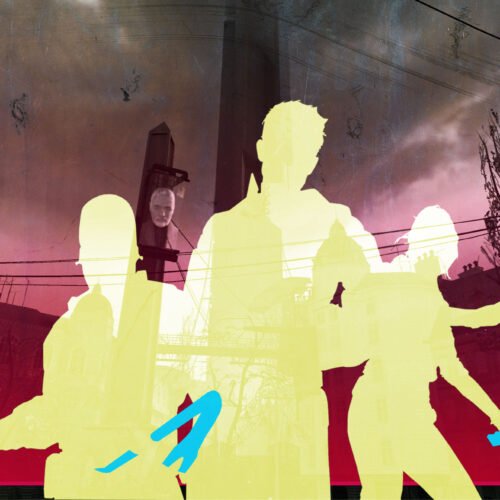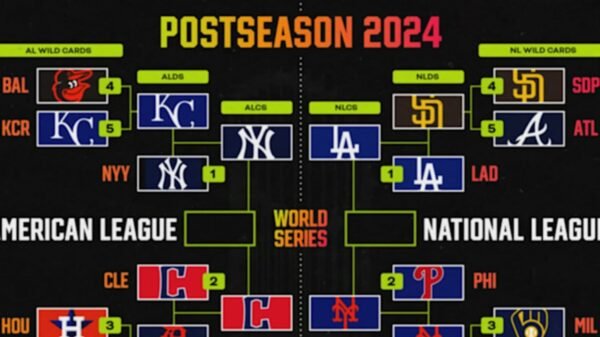From physics to greyboxing, Half-Life 2 broke numerous new floor.
This text is a part of our twentieth anniversary of Half-Life 2 collection.
Aurich Lawson
Credit score:
It is Half-Life 2 week at Ars Technica! This Saturday, November 16, is the twentieth anniversary of the discharge of Half-Life 2—a sport of historic significance for the creative medium and know-how of laptop video games. Every day up via the sixteenth, we’ll be working a brand new article wanting again on the sport and its influence.
There was some debate about which product was the primary fashionable “triple-A” online game, however ask most individuals and one reply is bound to a minimum of be a contender: Valve’s Half-Life 2.
For Western PC video games, Half-Life 2 set a normal that held robust in builders’ ambitions and in gamers’ expectations for properly over a decade. Regardless of that, there’s solely a lot new floor it actually broke when it comes to how video games are made and designed—it’s simply that almost all video games didn’t have the identical dedication to scope, scale, and polish all on the similar time.
To kick off every week of articles wanting again on the influential basic, we’re going to go over the best way it was made, and simply as importantly, the thought that went into its design—each of which have been extremely influential.
A narrative of cabals and Electronics Boutique
Improvement, design, and manufacturing practices within the video games business have all the time diverse broadly by studio. However due to the success of Half-Life 2, among the approaches that Valve took have been copied elsewhere within the business after they have been shared in weblog posts and convention talks at occasions just like the Recreation Developer’s Convention (GDC).
The cabals of Valve
Valve is legendary for influencing many issues in gaming, nevertheless it was most influential in its comparatively flat and democratic group construction, and that performed out even throughout Half-Life 2’s improvement within the early 2000s. Whereas many studios are damaged up into clear departments huge and small for various disciplines (similar to artwork, degree design, fight design, narrative design, AI programming, and so forth), many components of Valve’s Half-Life 2 group consisted of a half-dozen multi-disciplinary small teams the corporate internally called “cabals.”
Every main chapter in Half-Life 2 had its personal distinctive four-to-five-person cabal made up of degree designers and programmers. These teams constructed their ranges largely independently whereas often exhibiting their work to different cabals for suggestions and cross-pollination of fine concepts. All of them labored inside constraints set in a pre-production section that laid out parts like the primary story beats, among the weapons, and so forth.
Every main chapter, like this battle-in-the-streets one towards the top of the sport, was designed by a largely unbiased cabal. 
Credit score:
Moreover, equally sized design cabals labored on elements of the sport’s design that crossed a number of ranges—usually made with representatives from the chapter cabals—for issues like weapons.
There was even a “Cabal Cabal” made up of representatives from every of the six chapter groups to critique the work coming from all of the groups.
Ruthless playtesting
Many sport designers—particularly again within the ’80s or ’90s—labored largely in isolation, figuring out privately what they thought could be enjoyable after which delivery a completed product to an viewers to seek out out if it actually was.
In contrast, Valve put a substantial amount of emphasis on playtesting. To be clear: Valve didn’t invent playtesting. Nevertheless it did make {that a} key a part of the design course of in a approach that’s even fairly frequent at present.
The Half-Life 2 group would ship representatives to public locations the place potential followers may hang around, like Electronics Boutique shops, and would strategy them and say one thing alongside the traces of, “Would you wish to play Half-Life 2?” (Most mentioned sure!)
A photograph from an precise early 2000s playtest of an in-development Half-Life 2, courtesy of a presentation slide from a Valve GDC discuss.

Credit score:
The volunteer playtesters have been delivered to a room arrange like an actual participant’s lounge and advised to sit down on the laptop desk and easily play the sport. Behind them, the extent’s cabal would sit and watch a feed of the gameplay on a TV. The designers weren’t allowed to speak to the testers; they merely took notes.
By means of this course of, they realized which designs and concepts labored and which of them merely confused the gamers. They then made iterative modifications, playtested the extent once more, and repeated that course of till they have been proud of the result.
Right this moment’s builders typically take a extra subtle strategy to sourcing gamers for his or her playtests, ensuring they’re placing their video games in entrance of a wider vary of individuals to make the video games extra accessible past a devoted fanatic core. However nonetheless, playtesting throughout the business at present is on the degree it’s due to Valve’s refinement of the method.
The alpha wave
For a sport as bold as Half-Life 2 was, it’s shocking simply how polished it was when it hit the market. That iterative mindset was an enormous a part of it, nevertheless it prolonged past these shopper playtests.
Valve made positive to allocate a big period of time for iteration and refinement on an alpha construct, which on this case meant a model of the sport that could possibly be performed from starting to finish. When chatting with different builders in regards to the course of, representatives of Valve mentioned that in the event you’re engaged on a sport for only a 12 months, you must attempt to get to the alpha level by the top of eight months so you may have 4 for refinement.
Apparently, this made a big effect on Half-Life 2’s general high quality. It additionally helped handle pure downsides of the cabal construction, like the truth that chapters developed by largely unbiased groups provided an inconsistent expertise when it comes to the issue curve.
With processes like this, Valve modeled a number of issues that may be commonplace in triple-A sport improvement for years to return—although not all of them have been carried out by Valve first.
For instance, the strategy to in-game cutscenes reverberates at present. Completely different cabals centered on designing the degrees versus planning out cutscenes by which characters would stroll across the room and work together with each other, all whereas the participant might freely discover the surroundings.
Nova Prospekt was one of many first ranges accomplished throughout Half-Life 2‘s improvement. 
Credit score:
The group that centered on story performances labored with degree designers to dam out the strolling paths for characters, and the extent designers had to make use of that as a constraint, constructing the degrees round them. That meant that modifications to degree layouts couldn’t create conditions the place new character animations must be made. That strategy remains to be utilized by many studios at present.
As is what’s now referred to as greyboxing, the observe of designing ranges with out high-effort paintings in order that artists can are available and fairly the degrees up after the format is settled, somewhat than having to consistently trip with designers as these designers “discover the enjoyable.” Valve didn’t invent this, nevertheless it was an enormous a part of the method, and its in-development ranges have been stuffed with the colour orange, not simply grey.
Discovering the DNA of Half-Life 2 in 20 years of video games
When Half-Life 2 hit the market through the newly launched Steam digital distribution platform (extra on that later this week), it was broadly praised. Critics and gamers on the time cherished it, calling it essential title and one which outlined the PC gaming expertise. A number of of the issues that got here out of its improvement course of that gamers bear in mind most from Half-Life 2 grew to become staples over the previous 20 years.
As an example, the sport set a brand new commonplace for character animations in absolutely interactive cutscenes, particularly with facial animations. Right this moment, much more superior movement seize is a standard observe in triple-A video games—to the purpose that video games that don’t do it (like Bethesda Recreation Studios titles) are broadly criticized by gamers merely for not taking that route, even when movement seize doesn’t essentially make sensible sense for these video games’ scope and design.
And Half-Life 2’s Gravity Gun, which dramatically constructed on previous video games’ physics mechanics, is in some ways a idea that builders are nonetheless taking part in with and increasing on at present. Ultrahand, the flagship participant skill in 2023’s The Legend of Zelda: Tears of the Kingdom, could possibly be seen as a considerable evolution from the Gravity Gun. Along with providing gamers the power to choose and place objects on this planet, it provides them the facility to connect them to at least one one other to construct inventive contraptions.
There’s additionally Half-Life 2’s strategy to utilizing environmental traces and artwork cues to information the participant’s consideration via realistic-looking environments. The sport was lauded for that on the time, and it was an strategy utilized by many standard video games within the years to return. Right this moment, many studios have moved on to way more specific participant cues just like the yellow climbing holds in so many latest triple-A titles. As you’ll see in an upcoming article this week written by somebody who performed Half-Life 2 for the very first time in 2024, Half-Life 2’s strategy could have set the stage, however fashionable gamers may count on one thing slightly completely different.
Environments like this have been rigorously designed to information the participant’s eye in refined methods. Right this moment, many triple-A video games take a much less refined strategy as a result of playtesting with broader audiences reveals it is typically vital.

Credit score:
One factor in regards to the surroundings design that Half-Life 2 was praised for hasn’t been changed nowadays, although: a dedication to refined environmental storytelling. World-building and vibes are maybe Half-Life 2’s biggest achievements. From BioShock to Dishonored to Cyberpunk 2077, this could be the realm the place Half-Life 2’s affect remains to be felt probably the most at present.
A legacy remembered
Trying again 20 years later, Half-Life 2 isn’t essentially remembered for radical new gameplay ideas. As a substitute, it’s recognized for excellent execution—and builders all over the place are nonetheless making use of classes realized by that improvement group to attempt to chase its excessive commonplace of high quality.
Even on the time, critics famous that it wasn’t precisely that there was something in Half-Life 2 that gamers had by no means seen earlier than. Somewhat, it was the mixed drive of high quality, scope, presentation, and refinement that made an influence.
In fact, Valve and Half-Life 2 are additionally recognized for a number of memorable cultural moments, among the business’s most notorious controversies, and taking part in an enormous half in introducing digital distribution. We’ll discover a few of these issues as we rely all the way down to the “Pink Letter Day” this Saturday.
Samuel Axon is a senior editor at Ars Technica. He covers Apple, software program improvement, gaming, AI, leisure, and combined actuality. He has been writing about gaming and know-how for almost twenty years at Engadget, PC World, Mashable, Vice, Polygon, Wired, and others. He beforehand ran a advertising and marketing and PR company within the gaming business, led editorial for the TV community CBS, and labored on social media advertising and marketing technique for Samsung Cell on the inventive company SPCSHP. He is also an unbiased software program and sport developer for iOS, Home windows, and different platforms, and he is a graduate of DePaul College, the place he studied interactive media and software program improvement.

























































